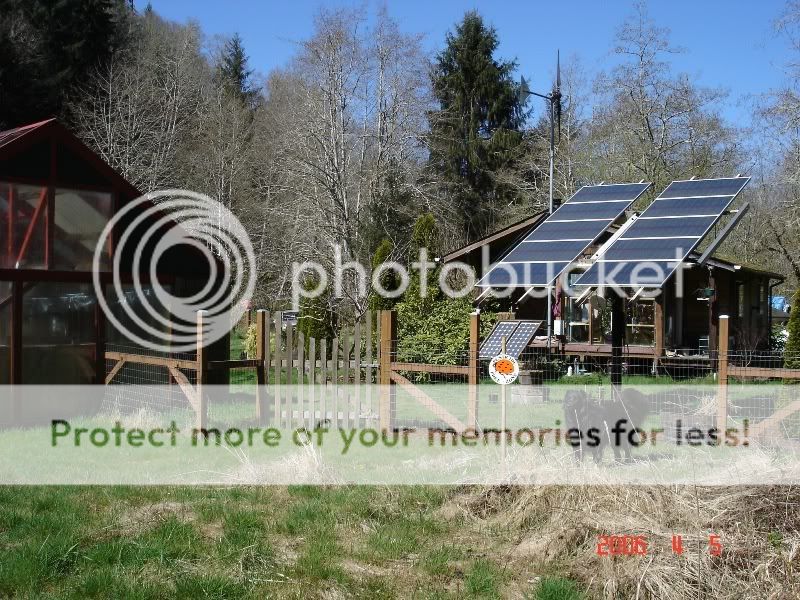Programs Let Homes Produce Green Power
"When the sun shines bright on their home in New York's Hudson Valley, John and Anna Bagnall live out a homeowner's fantasy. Their electricity meter runs backward.
Solar panels on their barn roof can often provide enough for all their electricity needs. Sometimes - and this is the best part - their solar setup actually pushes power back into the system. The Bagnalls "net meter," a state-sanctioned setup that allows homeowners to adopt renewable energy without taking the more radical step of disconnecting from their local electric utility, Central Hudson Gas & Electric.
Net metering essentially allows people to become mini-power producers. Programs vary state to state, but they are typically coupled with financial incentives that make it easier to invest thousands of dollars for photovoltaic panels, windmills or fuel cells. Since sun and wind are intermittent, customers still rely on the grid for steady service. The meter runs backward when more energy is produced than a customer consumes.
"When they first put this in, it ran backward more than forward," said John Bagnall, standing by a meter on a winter morning. "Even with a hazy sun ... we're producing electricity."
Advocates see net metering as an environmental twofer: it promotes green energy and reduces the strain on the power grid. But the number of people investing in solar panels or wind turbines has been relatively small so far, despite the selling point of being able to turn the table on electric utilities.
Federal legislation requires states to consider adopting net metering standards by 2008, though programs are already in place in more than 40 states, according to the Interstate Renewable Energy Council. California is king when it comes to net metering, accounting for 86 percent of the 15,200 customers tallied nationwide in 2004 by the Network for New Energy Choices, a New York City-based renewable energy advocacy group."
http://ibtimes.com/services/pop_print.htm?id=17631&tb=bh
"When the sun shines bright on their home in New York's Hudson Valley, John and Anna Bagnall live out a homeowner's fantasy. Their electricity meter runs backward.
Solar panels on their barn roof can often provide enough for all their electricity needs. Sometimes - and this is the best part - their solar setup actually pushes power back into the system. The Bagnalls "net meter," a state-sanctioned setup that allows homeowners to adopt renewable energy without taking the more radical step of disconnecting from their local electric utility, Central Hudson Gas & Electric.
Net metering essentially allows people to become mini-power producers. Programs vary state to state, but they are typically coupled with financial incentives that make it easier to invest thousands of dollars for photovoltaic panels, windmills or fuel cells. Since sun and wind are intermittent, customers still rely on the grid for steady service. The meter runs backward when more energy is produced than a customer consumes.
"When they first put this in, it ran backward more than forward," said John Bagnall, standing by a meter on a winter morning. "Even with a hazy sun ... we're producing electricity."
Advocates see net metering as an environmental twofer: it promotes green energy and reduces the strain on the power grid. But the number of people investing in solar panels or wind turbines has been relatively small so far, despite the selling point of being able to turn the table on electric utilities.
Federal legislation requires states to consider adopting net metering standards by 2008, though programs are already in place in more than 40 states, according to the Interstate Renewable Energy Council. California is king when it comes to net metering, accounting for 86 percent of the 15,200 customers tallied nationwide in 2004 by the Network for New Energy Choices, a New York City-based renewable energy advocacy group."
http://ibtimes.com/services/pop_print.htm?id=17631&tb=bh


